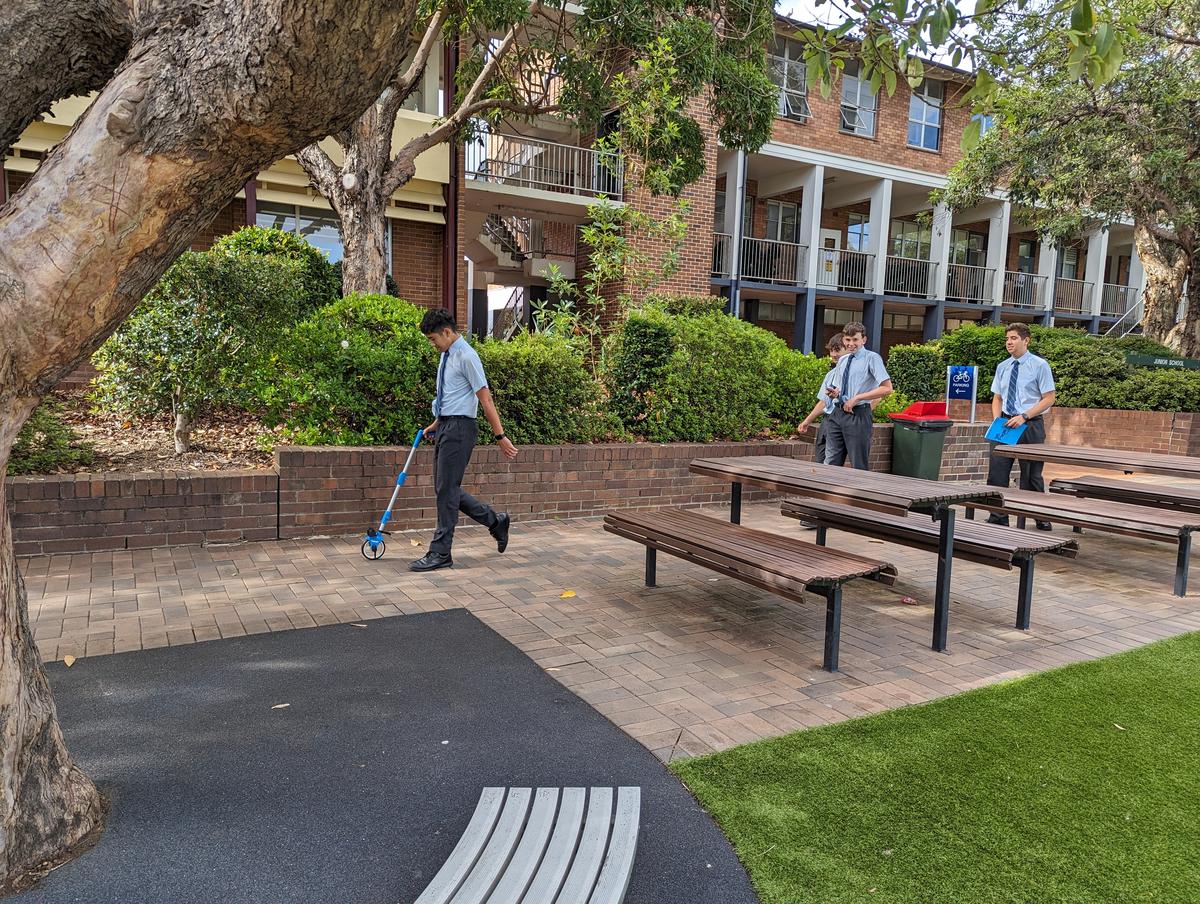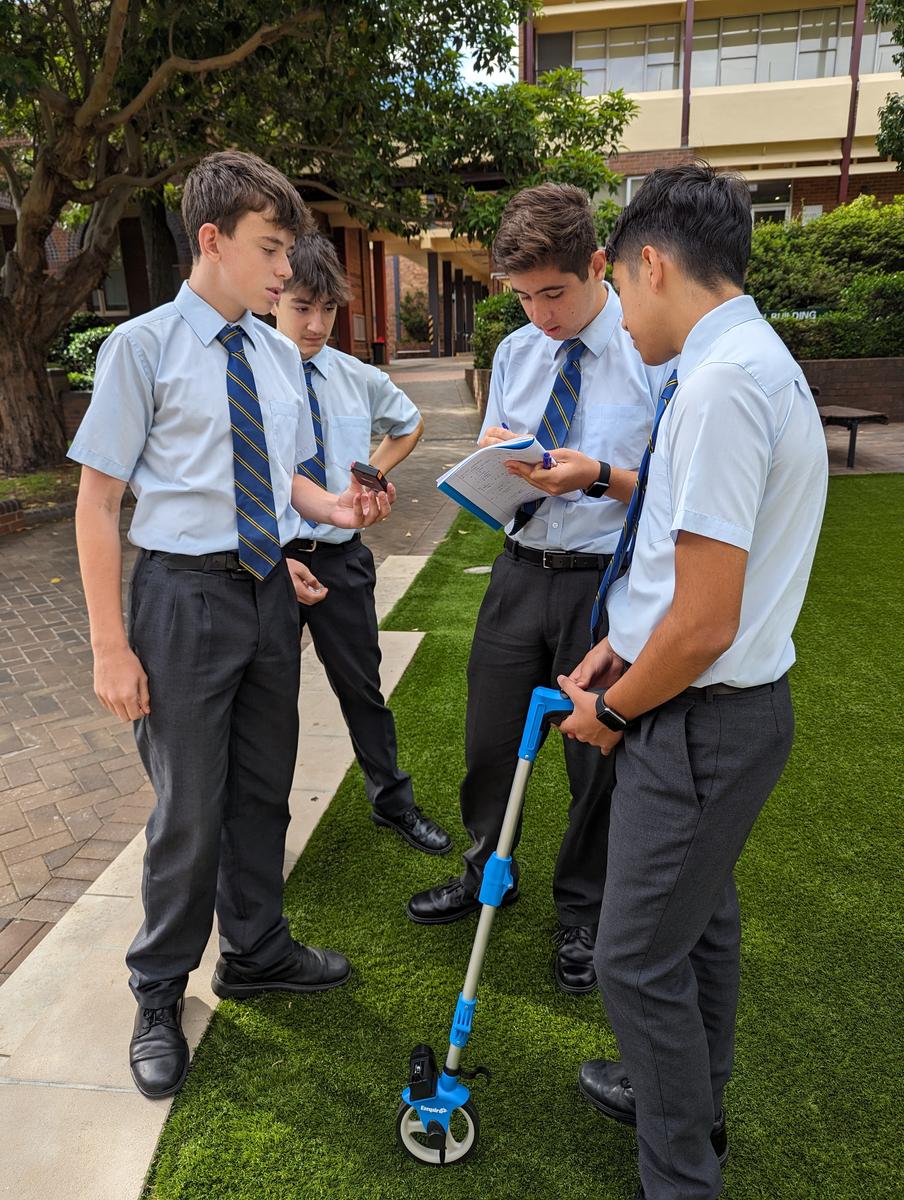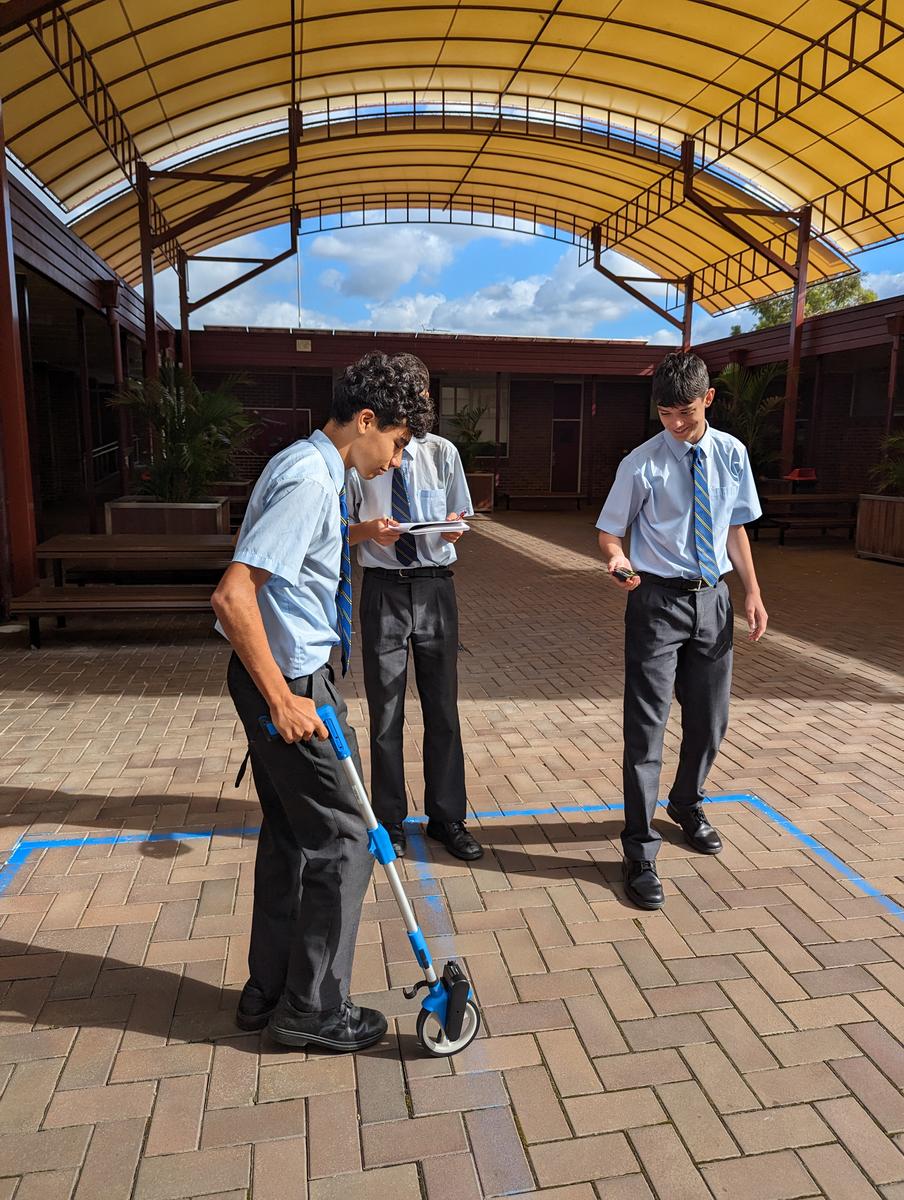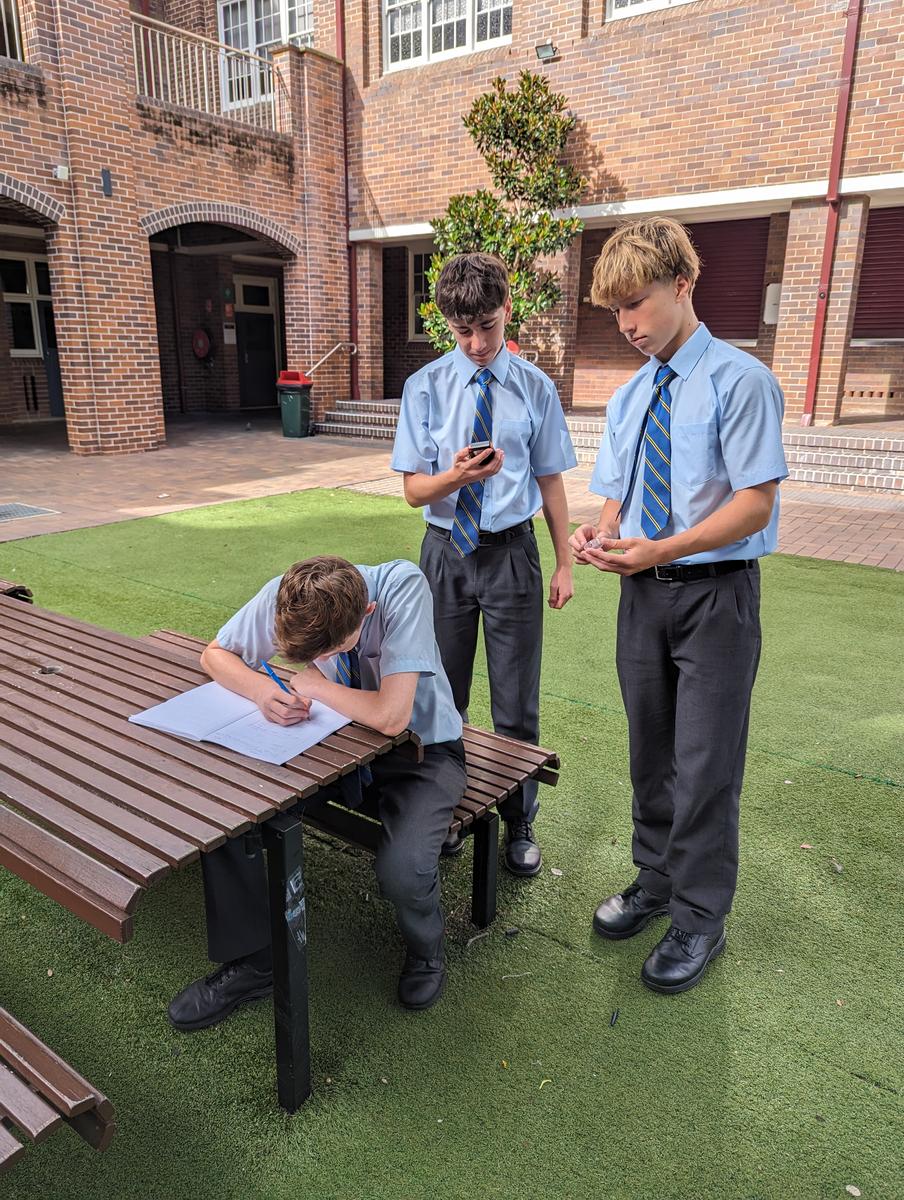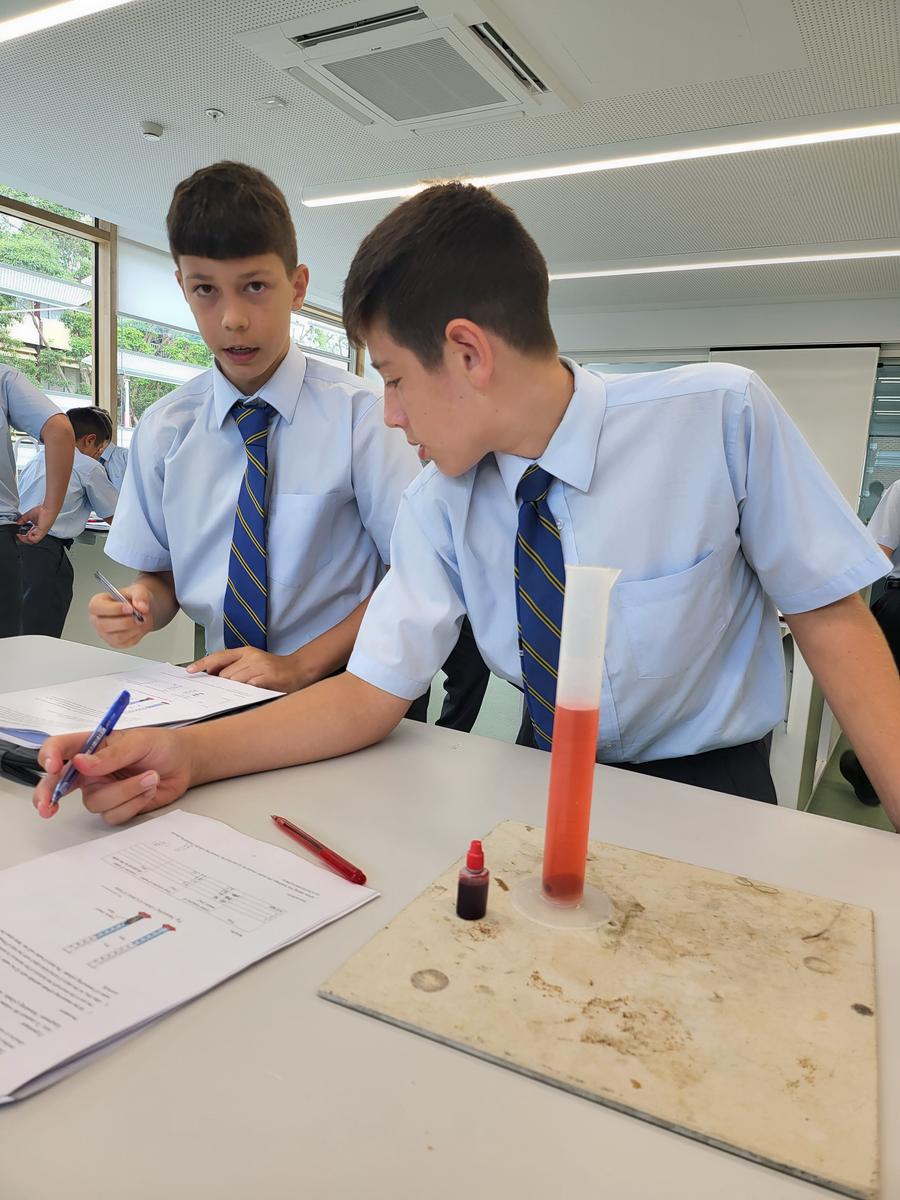Curriculum

Scholastic Malpractice
In last week’s issue of the Especean, I wrote about the College’s Assessment Policy and information regarding assessment in Years 7 to 12 for 2024, available by the end of this week on CANVAS under the respective Year pages and the TASS Parent Lounge.
One area of concern with assessment in all educational institutions is that of malpractice, that is, any activity undertaken by students that allows them to gain an unfair advantage over others. One form of malpractice is plagiarism, which is the act of passing off the words and work of others as one’s own, including one’s own previous work.
Plagiarism invariably leads to a zero mark being awarded for the submitted work. In universities, for example, the consequences for plagiarism are more severe for the student resulting in exclusion from the course and even exclusion from attending other educational institutions.
One concern shared by students, educators and educational institutions is the use of generative artificial intelligence (AI) in students writing assignments. The following points represent a few challenges on the use of AI that have emerged.
- Students may have genuine concerns about the accuracy of AI detectors such as in use with Turnitin as student text may be “flagged” as being AI-generated when in fact the text is the student’s own sentences.
- While “passing-off” unedited AI-generated work as one’s own is considered academic misconduct, there are strong arguments for teachers to consider and incorporate the ethical use of AI for assisting student inspiration, ideas, structuring, formatting, research, and feedback in the assignment writing process.
- While educators across many sectors of education are currently grappling on how to respond to the use of AI, not only for themselves but also for their students, there are very strong arguments for educators to consider and incorporate an ethical and balanced approach to technology, teaching, learning and assessment.
While AI has the capacity to enhance the writing process for students, teachers ought to be consulted in its use to maintain academic integrity. The College will continue to stay abreast of developments in the ethical and effective use of AI in education.
The problem for some school students is not one of a deliberate intent to “cheat “, but one of ignorance; of not being appropriately informed and skilled in the techniques in acknowledging and building upon the work of others within the framework of their own efforts; of not recognising and differentiating between reporting research undertaken and plagiarism.
In particular, Years 11 and 12 represent a giant leap in the expectations, standards and requirements associated with assessment tasks in the Higher School Certificate course. In fact, schools are now required to report instances of malpractice in HSC assessment to the NSW Education Standards Authority (NESA) which may have implications for university entry.
The College goes to great lengths to inform the boys of its scholastic expectations through extensive dissemination of assessment documentation; access to resources in the McGlade Library; online resources on CANVAS; online submission of senior assignments via Turnitin; pages 52 of the College Diary; and in-class implementation during Year 10 of the All My Own Work program, publicly available on the NESA website via the following link: All My Own Work.
Ignorance, innocent or otherwise, is never taken as a legitimate excuse. It is the student’s responsibility to ensure that the words and work of others, including the student’s previous work, have been appropriately acknowledged in their own work.
As always, the boys are advised to consult with their teachers if they are unsure of whether elements of their work will constitute plagiarism, or any other form of malpractice as outlined in the College’s Assessment Policy.
Michael Cutrupi
Director of Curriculum
Examination Supervisors - Expression of Interest
Our NESA HSC Presiding Officer Ms Joanne Saric, is seeking expressions of interest from current parents/carers of the College who have students in Years 5 to 9 to join the team in supervising the HSC and St Patrick's College (Years 11 and 12) internal examinations. Details are as follows:
- This is a casual paid position therefore a current WWCC (Working with Children Check) is compulsory.
- All training will be given by the Presiding Officer.
- Successful applicants must be available for all examination periods/days for Year 11 and Year 12 Examination and Assessment Blocks in March, May, August, September, October/November.
- Examination/assessment periods range from two to four weeks.
- Working hours are approximately 8:30 AM – 3:30 PM with some days extending to 5:00 PM (during the HSC Examination period).
- Closing date: Friday 1 March 2024.
Please email the Presiding Officer joannepeter@bigpond.com to express your interest or obtain further details.
Class Structures 2024
Across Term 4 last year, coordinators, class teachers and specialists were involved in using data and providing feedback to construct classes for 2024. It is essential that as professionals we engage in rich and genuine discussion around the structure and composition of all classes to best meet the learning needs of your son, and all students, at St Patrick’s College. It is a lengthy process involving many stakeholders over many weeks. We devote significant time to the process because we carefully consider a range of factors in constructing classes and we want to place all students as appropriately as possible. We aim to balance learning needs, behaviours, skills, and strengths across all classes.
Appropriate class placement is one aspect of our strategic intent to “support all learners to realise their potential and provide greater breadth and depth in learning experiences”. The following sets out class structures for 2024:
- Year 5: all classes are mixed ability.
- Year 6: one extension class (6 Red) and six mixed ability classes.
- Year 7: all classes are mixed ability other than those listed below.
- Advanced English (7ENG1 and 7ENG2), Advanced Mathematics (7MAT1 and 7MAT2), and Advanced Core classes (7REE1 and 7REE2, 7GEO/HIS1 and 7GEO/HIS2, 7SCI1 and 7SCI2, 7PED1 and 7PED2).
- Targeted intervention for Mathematics (7MAT6) and English (7ENG6). Students in intervention classes were nominated by Year 6 teachers and specialists.
- A new structure for Year 7 is the banding of levels (7MA1 and 7MA2, 7MA3 and 7MA4, 7 MA5 and 7MA7, 7MA8 and 7MA9) used in Year 6 2023 which provided great results for the boys.
- Year 8: all classes are mixed ability other than those listed below.
- Advanced English (8ENG1 and 8ENG2), Advanced Mathematics (8MAT1 and 8MAT2), and Advanced Core (8REE1 and 8REE2, 8GEO/HIS1 and 8GEO/HIS2, 8SCI1 and 8SCI2, 8PED1 and 8PED2, 8ITA1 and 8ITA2).
- Targeted intervention class for Mathematics (8MAT6) and English (8ENG6). Students in intervention classes were nominated by Year 7 teachers and specialists. These classes are not static; we are pleased that many boys benefitted from carefully targeted instruction and moved from the intervention classes in Year 7 into mixed ability classes for Year 8.
- Year 9: all classes are mixed ability other than those listed below.
- Advanced English (9ENG1 and 9ENG2), Advanced Core (9REE1 and 9REE4, 9SCI1 and 9SCI4, 9GEO/HIS1 and 9GEO/HIS4, and 9PED1 and 9PED4).
- The new structures for Mathematics in Year 9 reflect the changes to the NESA Mathematics syllabus. These include the accelerated class and classes identified as pathways to extension, advanced, advanced or standard, and standard.
- Year 10: all classes are mixed ability other than those listed below.
- Advanced English (10ENG1 which is a pathway to extension in Stage 6, and 10ENG2), Advanced Core (10REE and 10REE4, 10 SCI1 and 10SCI4, 10GEO/HIS1 and 10GEO/HIS4, and 10PED1 and 10PED4).
- In Mathematics, the accelerated group is the extension group (10MAT1), with the remainder of students allocated to 5.1 – 5.3 pathways based on assessment results and teacher professional judgement.
- Placement in a Year 10 class does not dictate placement in Year 11. All students should work hard, take on feedback, ask questions and endeavour to improve. We offer more advanced classes in English and Mathematics for Stage 6 than we do in Stage 5. At every stage, we aim to provide the most appropriate learning experiences for your sons.
The groupings for English, Mathematics, core, and practical classes are all different and derived from data about students’ learning and pastoral needs, as well as input from specialists and class teachers. At the end of 2023, students in Years 6 and 8 completed the Academic Attainment tests. We were able to draw on this most current data source, alongside formal assessment data and teacher recommendations in creating classes.
Advanced classes have been carefully constructed using multiple measures of student aptitude and ability, including school-based and external assessments but also referencing characteristics of giftedness, classroom performance and teacher professional judgement. Teacher feedback on suitability for placement in an advanced class is considered. For students in Years 9 and 10, demonstrated achievement is considered in equal measure to any diagnosis of giftedness. The advanced classes will be taught in alignment with pedagogical approaches appropriate for gifted students including enrichment activities and greater depth and breadth in learning experiences.
Not every student who wants to be in an advanced class will be placed in one, and therefore some students will naturally be disappointed. “Missing out” in one year does not mean a student will not be in an advanced class in subsequent years and it does not mean he has done anything “wrong”. We need to balance the needs of the boys collectively and individually, and sometimes the “on balance” must take precedence over the individual. We ask you as parents/carers to support the College and your son in continuing to work hard, communicate with his teachers, ask questions, and remain engaged in learning, regardless of the teacher he has or the class in which he is placed.
I take this opportunity to thank the Year Coordinators, specialists in the Diverse Learning Team and Year 6 teachers, Daniel Fields, and Sarah Tatola for their roles in creating classes. Their discernment, insight, knowledge of students and concern for addressing student needs and balance across all classes is inspirational.
Should you have any queries or concerns about your son’s placement for 2024, please contact Mr Cutrupi for Years 11 and 12, Ms Tatola for Years 5 and 6 or me for Years 7 – 10. You can be confident that we have worked very hard over many weeks to do our best in what is a difficult process to get our classes just right.
Denise Lombardo
Director of Learning and Innovation
Year 10 Science: Distance and Displacement
Last week, 10 Science 4, as part of our Physics – Motion unit, learnt about velocity and displacement. Our class undertook a physics experiment where our aim was to compare the speed and velocity of a journey through the school.
Class was split into groups of four, we were each given a trundle wheel, a stopwatch, and a compass. In our groups, we each chose an area of the school to journey through where we would measure the distance of the area with our trundle wheel, and we would record the time it took with a stopwatch.
By recording these two components of our experiment, we would be able to then calculate the speed, and subsequently the velocity of our journey. After we recorded our times, we would then measure the distance and the direction between our starting point and our end point – this information would be the displacement of our journey.
After our experiment, each group calculated their speed, (calculated through the distance over time), and then our velocity, (which is calculated through the equation of the displacement of the journey over the time it took for the journey to start). This experiment effectively introduced our class to the concepts of displacement and velocity.
We thoroughly enjoyed the lesson and look forward to more Physics experiments in the future.
Will Ters | Year 10 Science
Year 7 Science
‘Science and everyday life cannot and should not be separated.’ - Rosalind Franklin. I tend to agree with Rosalind Franklin’s statement.
Life is unimaginable without science as it is in every aspect of our lives. Without it, life as we know it, would be significantly different. Just imagine everything from energy, to agriculture, health, transportation, communication, and economics all involve major elements of science.
We are incredibly lucky that the new state of the art Scientia Building, which houses modern science labs, will be accessed and utilised by Year 7 to investigate and discover new things.
So far, Year 7 have completed several tasks in science class this year, including:
- Laboratory safety rules
- Equipment (bunsen burner, measuring cylinder, etc.) needed to be used in the lab
- Branches of science
- Completing several practical lessons in the labs, such as lighting a bunsen burner, measuring different temperatures using a thermometer, and how to use a measuring cylinder.
I look forward to the Year 7 Science program in providing my cohort an opportunity to experience science as we never have before.
Marcus Gregory | 7 Science 1

